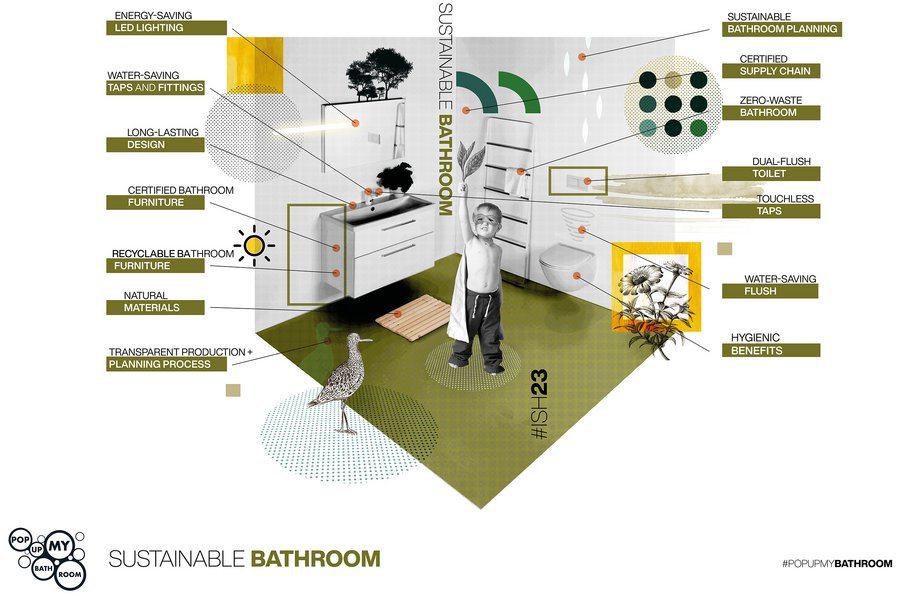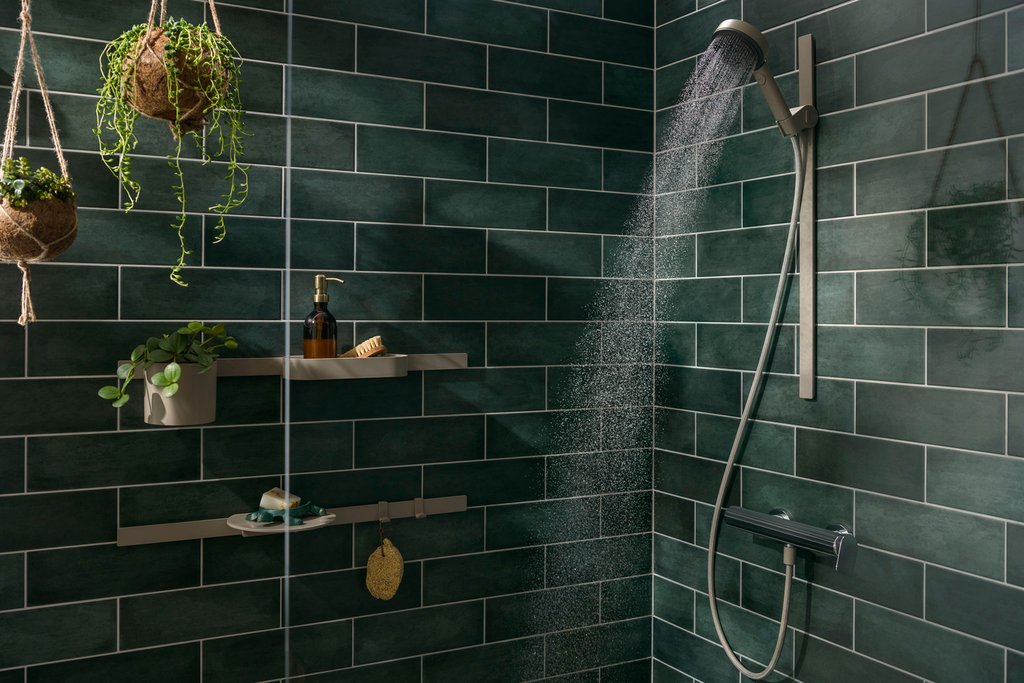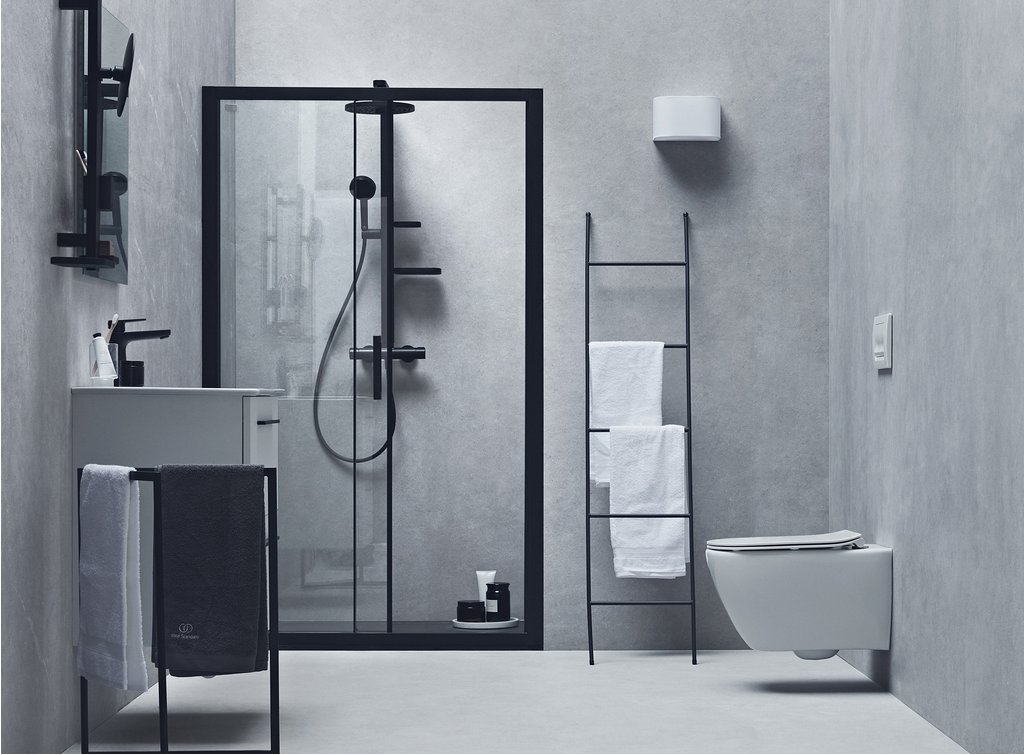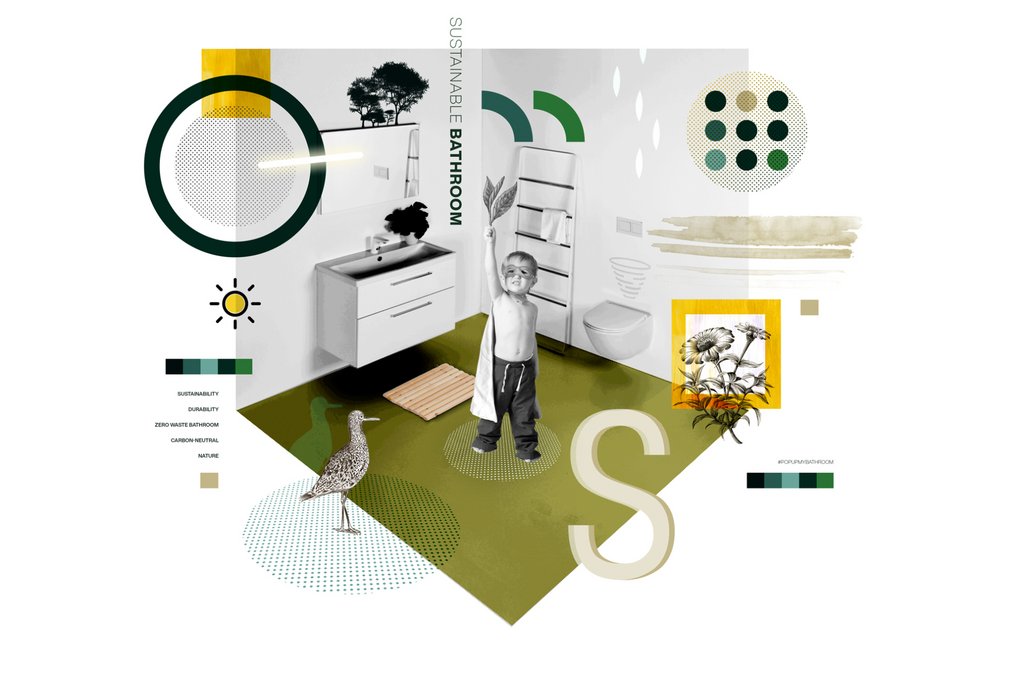Seven steps to a Sustainable Bathroom

Sustainable Bathroom is perhaps the most
important of the developments to be showcased in The Bathroom Experience at ISH
2023. Pop up my
Bathroom will be presenting sustainability in the bathroom as a future concept that
strives for the optimal combination of smart, water-saving and energy-saving
products, eco-friendly industrial production, sustainable materials and
enduring design, while simultaneously conveying a sense of being in touch with
nature. But for
many people, that’s no longer enough. The Sustainable Bathroom will therefore be placed in the overarching
societal context of consumer trends like zero waste, which are transferred to
the bathroom as the basis for the ideas shown.
1. Cradle to Cradle
Cradle to cradle is a holistic approach for a sustainable circular
economy and one of the most important sustainable movements to emerge in recent
years. It’s based on the idea of thinking and acting in cycles: as in nature,
no waste is produced; right from the start, products need to be designed in
such a way that all the materials and components can be returned to the cycle
they were taken from.
In the bathroom sector, implementation of the cradle-to-cradle principle
is still in the early stages. Some of the first approaches are being
undertaken by bathroom furniture manufacturers. Products made of steel enamel or
sanitary ceramic can already be 100% recycled via established return processes. The first
shower tray manufacturer is taking its products back after use and returning
the materials to the manufacturing process.
2. Sustainable Design
The climate, society, the environment, social justice, the reusability
of resources and the circular economy are all important facets of sustainable
design (or ecodesign). Products should be designed and implemented in
such a way that they conserve resources and are not harmful to the environment. Humans,
animals and nature should all benefit equally from these products. Sustainable
design factors the entire product life cycle into its thinking. However,
when it comes to products for the bathroom, the long useful life that should be
striven for is both a challenge and a balancing act: on the one hand, as the
bathroom becomes cosier, it is increasingly subject to the influence of
seasonal lifestyles. On the other, a long useful life prevents
participation in resource-conserving innovations – such as the numerous
developments seen in the toilet segment in recent years.
3. The indoor environment
Everybody wants a nice home – snug, cosy and above all
health-friendly. The air quality has a direct influence on
wellbeing, not only for allergy sufferers. But the air we breathe – especially
in indoor spaces – is often contaminated with many different harmful substances. Air filters
help purify the indoor air and make it clean and healthy again – a particularly
welcome improvement for anybody who suffers from allergies. Unfortunately,
when it comes to existing bathrooms, it’s still by no means the case that a
window is automatically part of the architecture. And yet a connection with nature is
certainly desirable in the Sustainable Bathroom. The bathroom’s location and position
within the building thus has a crucial influence on daylighting, a healthy
indoor climate and general wellbeing.
4. Zero Waste Bathroom
Like the minimalism trend, the zero waste movement is rapidly gaining
ground. Zero waste means not producing anything that has to be thrown away – especially
when it comes to plastic waste, which often accumulates in the bathroom because
toiletries and cleaning products (toothpaste, shower gel, shampoo, all-purpose
cleaning products etc.) generally come in plastic containers. However,
alternatives are gradually becoming available. Zero waste is therefore an interesting
approach that can increase awareness of the amount of waste we generate and
point out new ways to reduce (plastic) waste to a minimum.
When this principle is transferred to the bathroom, the potential for
cutting down on waste is considerable because the products in question are used
on a daily basis. The sanitaryware also has a role to play in the
zero waste bathroom. A rimless ceramic toilet almost completely
eliminates the need for toilet cleaner, for instance, while a shower toilet
makes moist toilet paper superfluous and significantly reduces toilet paper
consumption in general. Dirt-repellent finishes also make a major
contribution to reducing the amount of cleaning products required and thus
avoiding plastic packaging waste.
5. Water as a precious resource
Water is interlinked with the bathroom at various different levels. Water is
the ideal medium for personal hygiene – we depend on it for showering, bathing,
intimate hygiene, and washing our hands and faces. But water is also an emotional and
health-promoting medium for upgrading the bathroom into a wellness room. And last
but not least, water carries away dirt and bodily waste.
The potential for saving cold and in particular warm water lies in
reducing the amount used; at the same time, however, it’s essential not to
sacrifice comfort, convenience or the emotional component of water. That can be
achieved with water-saving hand and overhead showers, thermostatic fittings,
touchless taps, optimised toilets, dual flush toilets or opting to take a
shower rather than a bath.
Greywater recycling – i.e. using rainwater or wastewater from the
shower, washbasin or bath to flush the toilet – has not yet established itself. The double pipe
systems required are cost-intensive and virtually impossible to implement in
existing buildings.
6. Energy as a precious resource
Ensuring the rapid availability of warm water at the desired temperature
can save a lot of energy. Relearning beloved rituals also makes a
significant difference to the household energy footprint when you add up the
savings over the course of the year. Do you keep the warm water running
while you’re soaping yourself under the shower? How long does the perfect shower
last? And does the bathroom really always have to be two or three degrees
warmer than the rest of the home?
Thermostatic fittings and water-saving taps with innovative components (e.g.
cartridges) are key products for the Sustainable Bathroom. But panel
heaters and underfloor heating in combination with a modern and sustainable
heating system are also central to improving the bathroom’s energy footprint.
7. The bathroom as a place to revitalise
Besides being the place where we clean and groom ourselves, the Sustainable
Bathroom is a place for regenerating as well. Water and warmth have a healing,
restorative effect on the human body. The private spa is both a retreat
and a “fountain of youth”. Accordingly, the Sustainable Bathroom is also a
powerbank and a stylish space for slowing down and regenerating, taking care of
our health and recharging our batteries. In an ethical,
health-related, social and therefore also economical sense, that’s an important
aspect of sustainability too – and one that shouldn’t be forgotten.


